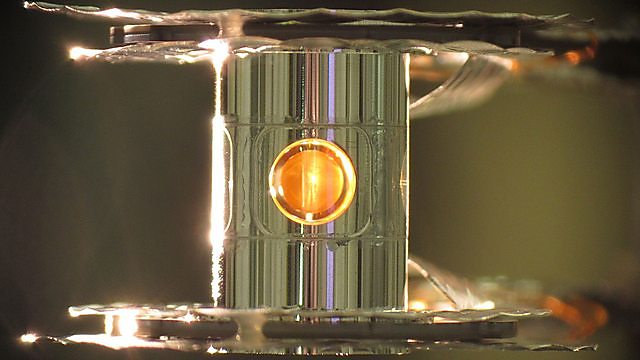
Nuclear fusion, genetic diseases, whale watching from space
Breakthrough in the quest for nuclear fusion, living with genes for diseases like cancer and dementia, whale watching from space.
Nuclear fusion
Researchers, at the Lawrence Livermore National Laboratory in the US, say they have had a breakthrough in the quest for nuclear fusion. They are on a mission to recreate a tiny sun, concentrating massive laser power onto a tiny pellet of fuel. Now the scientists report in the journal Nature that they have been able to get more energy out than they put in to the nuclear fuel for the first time - the experiment itself consumes large amounts of power, so this isn't yet an energy generator.
Genes and disease
Speaking to contributors to the book The Story Within, Claudia discusses the impossibly difficult decisions that arise from living with genetic disorders - whether, when and how to intervene and whether and how best to involve family members - and how life can be irrevocably changed by the discovery of a family history of genetic mutation.
Wildlife Trafficking
Experts from around the world are gathering in London to discuss "the global crisis" in the wildlife trade. Conservationists say animal trafficking is reaching unprecedented levels and species such as rhinos, elephants and tigers are under threat of extinction.The aim of the meeting, hosted by the Zoological Society of London, is to find new ways to protect animals and reduce demand for wildlife products.
Whales from Space
Scientists have demonstrated how new satellite technology can be used to count whales, and ultimately estimate their population size. Using Very High Resolution (VHR) satellite imagery, alongside image processing software, they were able to automatically detect and count whales breeding in part of the Golfo Nuevo, Peninsula Valdes in Argentina.
Oceans
Joel Werner looks at plans to help conserve sharks in the waters around remote Pacific islands. A shark fin export trade to Asia has provided a lucrative but ultimately unsustainable income for the islanders. And he visits New Zealand, where a high-tech solution has been designed to help sustainably harvest a different valuable export commodity - marine snails. A high demand from Asia for this delicacy has endangered the snails. Joel hears how digital technology is being used to track them to ensure there are enough left to breed. He also sees what tracking technology is revealing about how seabirds are affected by commercial fishing practices.
Stroke monitor
Physiotherapist, Margit Alt Murphy of the University of Gothenburg in Sweden thinks that motion capture is ideal for monitoring patients who have had a stroke, to gauge how well their treatment is going. It has been the subject of Dr Alt Murphy's PhD thesis and she discussed her ideas with Gareth Mitchell.
Last on
Chapters
-
Nuclear fusion
Researchers say they have had a breakthrough in the quest for nuclear fusion.
Duration: 05:38
Genes and Disease
Would you Want to Find out About an Inherited Genetic Condition?
Duration: 13:34
Wildlife Trafficking
Experts are gathering in London to discuss "the global crisis" in the wildlife trade.
Duration: 03:45
Whales from space
Scientists have demonstrated how new satellite technology can be used to count whales.
Duration: 10:57
Oceans
Saving sharks and snails in the Pacific using modern technology and traditional practice
Duration: 09:52
Stroke monitor
Motion capture helps stroke patients
Duration: 05:40
Broadcast
- Sun 16 Feb 2014 14:06GMT大象传媒 World Service Online
Podcast
-
![]()
Unexpected Elements
The news you know, the science you don't

